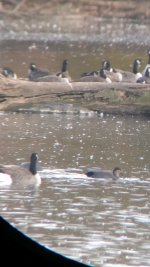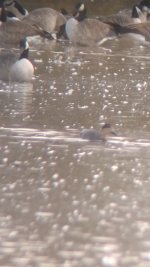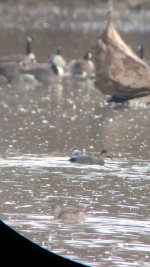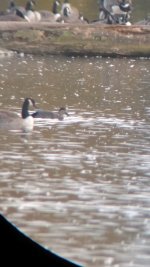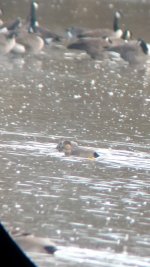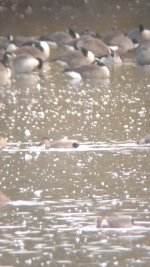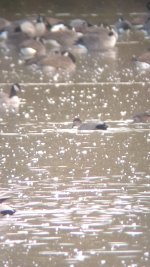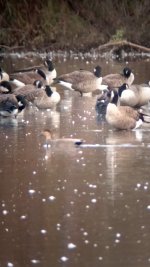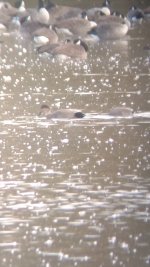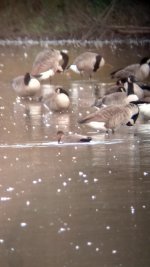birdmeister
Well-known member

Hello all,
I saw a duck at Green Lane Reservoir back in late October that struck me as odd. It was definitely mostly Gadwall, but a few features suggested Mallard hybridization to me. First, it had a striking yellow-buff head that contrasted sharply with a dark gray (sometimes green) crown, more so than any other of the 60+ Gadwalls present, male or female. In photos, the bird shows a hint of a pale neck collar. The last feature is that I think it had deep orange legs, unlike Gadwall's yellow-orange legs.
However, it did not show certain features of a classic Gadwall X Mallard, including:
pale on bill
different head shape
dark brown chest
any Mallard features on rest of body and/or tail
I have gotten a few expert opinions on this, and they ranged from "not enough to say either way" to "looks good for a hybrid", even "more likely hybrid than not, possibly a 2nd generation".
What are your thoughts on this? Likely a hybrid, or just a male Gadwall that's slightly off?
I am leaning towards some degree of a hybrid, especially considering that I could fairly quickly pick it out from the many Gadwalls it was with.
I'm attaching ten photos, all "phone-scoped" and not good quality.
I saw a duck at Green Lane Reservoir back in late October that struck me as odd. It was definitely mostly Gadwall, but a few features suggested Mallard hybridization to me. First, it had a striking yellow-buff head that contrasted sharply with a dark gray (sometimes green) crown, more so than any other of the 60+ Gadwalls present, male or female. In photos, the bird shows a hint of a pale neck collar. The last feature is that I think it had deep orange legs, unlike Gadwall's yellow-orange legs.
However, it did not show certain features of a classic Gadwall X Mallard, including:
pale on bill
different head shape
dark brown chest
any Mallard features on rest of body and/or tail
I have gotten a few expert opinions on this, and they ranged from "not enough to say either way" to "looks good for a hybrid", even "more likely hybrid than not, possibly a 2nd generation".
What are your thoughts on this? Likely a hybrid, or just a male Gadwall that's slightly off?
I am leaning towards some degree of a hybrid, especially considering that I could fairly quickly pick it out from the many Gadwalls it was with.
I'm attaching ten photos, all "phone-scoped" and not good quality.




